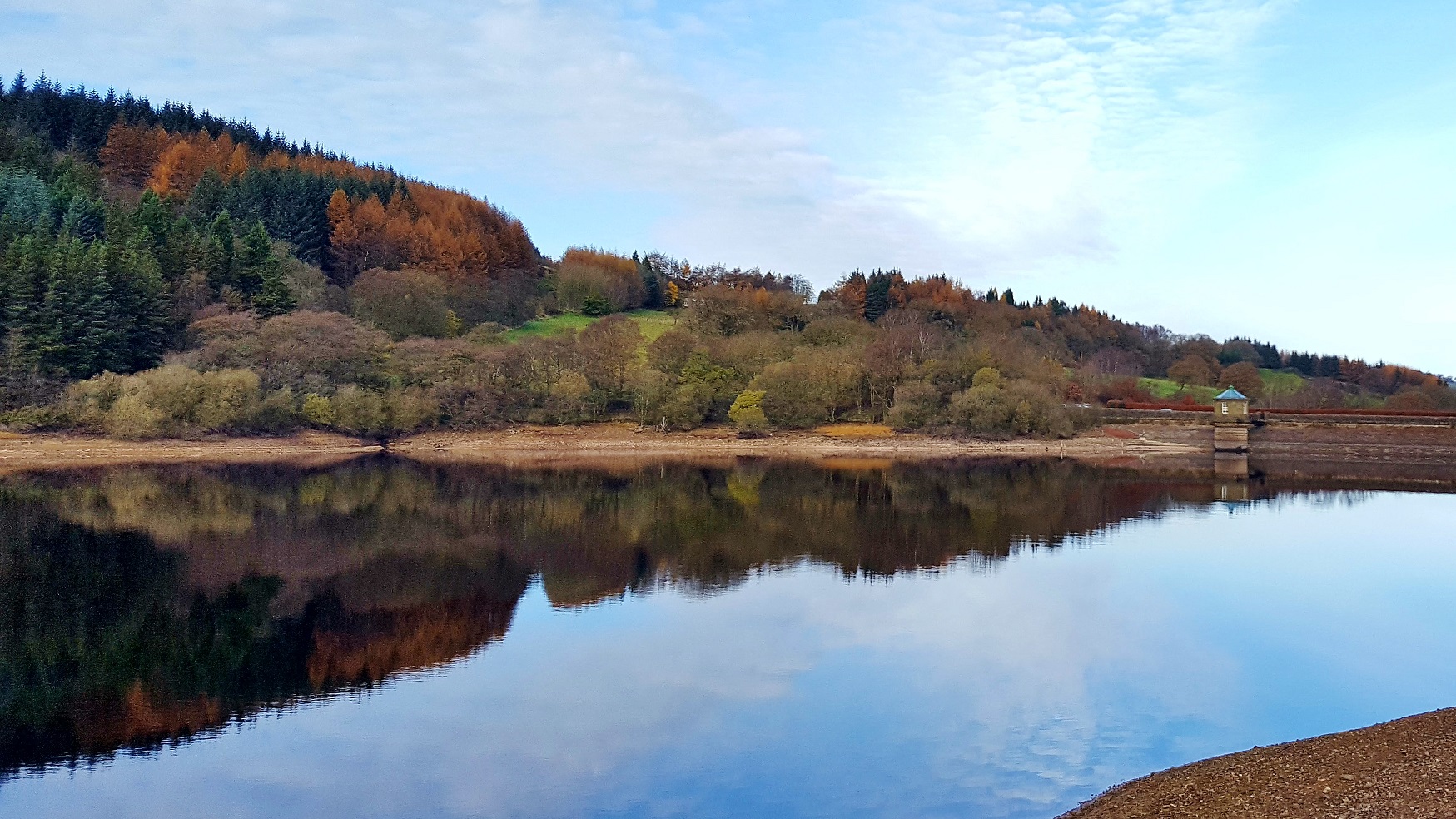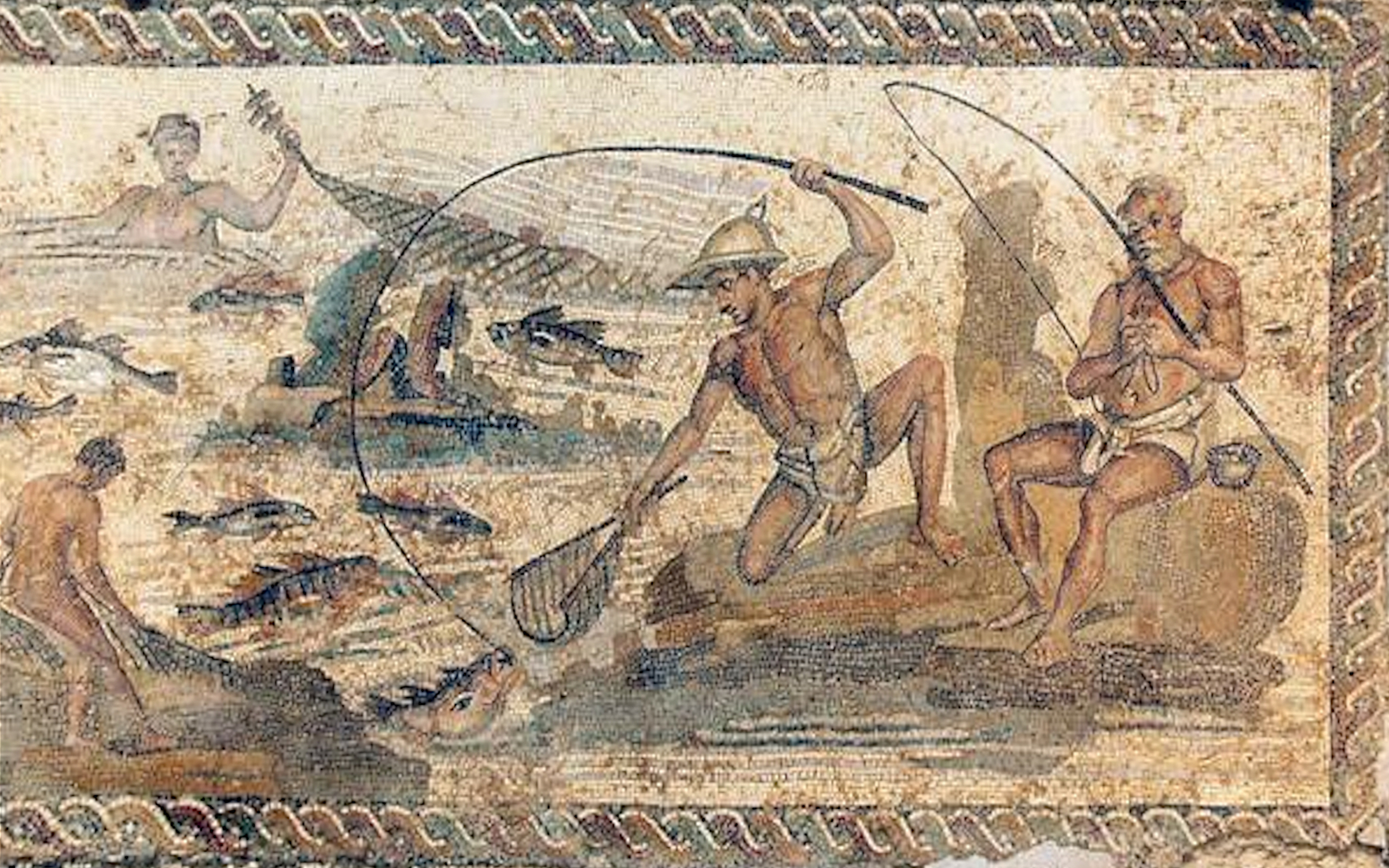|
Damflask Reservoir
Damflask Reservoir is situated at grid reference five miles (eight kilometres) west of the centre of Sheffield in the Loxley valley close to the village of Low Bradfield and within the city's boundaries. The hamlet of Stacey Bank is located to the east. The reservoir has a capacity of 4,250.9 million litres (1,123.1 million gallons) and has a surface area of with a maximum depth of . The dam wall is approximately wide with a height of . Construction Damflask reservoir was built as one of a group of reservoirs in the Bradfield area (the others being Strines, Agden and Dale Dike reservoirs) to supply both fresh drinking water and a guaranteed supply of running water to the population and industries respectively of Sheffield. It was completed in 1896 with the dam walls being constructed from local stone, and its original purpose was primarily as a compensation reservoir to ensure a continuous flow of water to the River Loxley downstream. It takes its name from Damflask v ... [...More Info...] [...Related Items...] OR: [Wikipedia] [Google] [Baidu] |
Loxley, South Yorkshire
Loxley is a village and a suburb of the city of Sheffield, England. It is a long linear community which stretches by the side of the River Loxley and along the B6077 (Loxley Road) for almost . Loxley extends from its borders with the suburbs of Malin Bridge and Wisewood westward to the hamlet of Stacey Bank near Damflask Reservoir. The centre of the suburb is situated at the junction of Rodney Hill and Loxley Road where the old village green stands and this is located north west of Sheffield city centre. The suburb falls within the Stannington ward of the City of Sheffield. Loxley was a village in the West Riding of Yorkshire under the jurisdiction of Wortley Rural District Council, until it became part of the City of Sheffield in the 1974 boundary changes brought on by the Local Government Act 1972. Today the suburb is within Bradfield Parish Council and consists almost exclusively of residential housing but it did have some industrial activity in the past. Much of the Lo ... [...More Info...] [...Related Items...] OR: [Wikipedia] [Google] [Baidu] |
Yorkshire Water
Yorkshire Water is a water supply and treatment utility company servicing West Yorkshire, South Yorkshire, the East Riding of Yorkshire, part of North Lincolnshire, most of North Yorkshire and part of Derbyshire, in England. The company has its origins in the Yorkshire Water Authority, one of ten regional water authorities created by the Water Act 1973, and privatised under the terms of the Water Act 1989, when Yorkshire Water plc, the parent company of the Yorkshire Water business, was floated on the London Stock Exchange. The parent company was Kelda Group in 1999. In February 2008, Kelda Group was bought by a consortium of infrastructure funds. It is regulated under the Water Industry Act 1991. Area The company's area includes West Yorkshire, South Yorkshire, the East Riding of Yorkshire, part of North Lincolnshire, most of North Yorkshire and part of Derbyshire. The area is adjoined on the north by that of Northumbrian Water, on the west by United Utilities, on the south ... [...More Info...] [...Related Items...] OR: [Wikipedia] [Google] [Baidu] |
Peak District Boundary Walk
The Peak District Boundary Walk is a circular walking trail, starting and finishing at Buxton and broadly following the boundary of the Peak District, Britain's first national park. The route was developed by the Friends of the Peak District (a branch of the Campaign to Protect Rural England) and was launched on 17 June 2017. The Friends of the Peak District's founders, Gerald and Ethel Haythornthwaite, proposed the boundary of the Peak District National Park, which was subsequently established as the United Kingdom's first National Park in 1951. The route is waymarked with green markers and uses existing footpaths, tracks, quiet lanes, disused railway lines and a canal towpath. The start and finish is at the King's Head pub on Buxton Market Place, where a plaque has been installed by the Peak & Northern Footpaths Society (PNFS). The terrain covers open moorlands of the South Pennines, the limestone scenery of the Derbyshire Dales, woodlands, reservoirs and rural farming ... [...More Info...] [...Related Items...] OR: [Wikipedia] [Google] [Baidu] |
Tactile Paving
Tactile paving (also called tenji blocks, truncated domes, detectable warnings, tactile tiles, tactile ground surface indicators, tactile walking surface indicators, or detectable warning surfaces) is a system of textured ground surface indicators found on stairs and railway station platforms, to assist pedestrians who are vision impaired. Tactile warnings provide a distinctive surface pattern of truncated domes, cones or bars, detectable by a long cane or underfoot, which are used to alert the vision-impaired of approaching streets and hazardous surface or grade changes. There is disagreement between the design and user community as to whether installing the aid inside buildings may cause a tripping hazard. A system of tactile paving was first instituted in Japan at pedestrian crossings and other hazardous road situations; the United Kingdom, Australia and the United States picked up the standard in the early 1990s. Canada started incorporating them into transportation first ... [...More Info...] [...Related Items...] OR: [Wikipedia] [Google] [Baidu] |
Countryside And Rights Of Way Act 2000
The Countryside and Rights of Way Act 2000 (c. 37), known informally as the CRoW Act or "Right to Roam" Act is a United Kingdom Act of Parliament affecting England and Wales which came into force on 30 November 2000. Right to roam The Act implements the so-called "right to roam" (also known as ''jus spatiandi'') long sought by the Ramblers' Association and its predecessors, on certain upland and uncultivated areas of England and Wales. This element of the act was implemented in stages as conclusive maps of different regions were produced. The act refers to areas of 'mountain, moor, heath and down' in addition to registered common land; not all uncultivated land is covered. Rights of way A staged review of public rights of way, including limited rights to create new public footpaths where needed, is being conducted under the Act. Again, this is being conducted in a staged manner, which can produce anomalies – of the two administrative areas of the County of Gloucestershir ... [...More Info...] [...Related Items...] OR: [Wikipedia] [Google] [Baidu] |
European Perch
The European perch (''Perca fluviatilis''), also known as the common perch, redfin perch, big-scaled redfin, English perch, Euro perch, Eurasian perch, Eurasian river perch, Hatch, poor man’s rockfish or in Anglophone parts of Europe, simply the perch, is a predatory species of the freshwater perch native to Europe and northern Asia. The species is a popular quarry for anglers, and has been widely introduced beyond its native area, into Australia, New Zealand and South Africa. They have caused substantial damage to native fish populations in Australia and have been proclaimed a noxious species in New South Wales. Description European perch are greenish with red pelvic, anal and caudal fins. They have five to eight dark vertical bars on their sides. When the perch grows larger, a hump grows between its head and dorsal fin. European perch can vary greatly in size between bodies of water. They can live for up to 22 years, and older perch are often much larger than average; t ... [...More Info...] [...Related Items...] OR: [Wikipedia] [Google] [Baidu] |
Rutilus
''Rutilus'' is a genus of fish in the family Cyprinidae found in Eurasia. This genus is a widely distributed lineage of cyprinids and ranges from West Europe to East Siberia. Species In FishBase (2022), nine species are included in the genus: * ''Rutilus caspicus'' (Yakovlev, 1870) (Caspian roach) * ''Rutilus frisii'' ( Nordmann, 1840) (Black sea roach) * ''Rutilus heckelii'' (Nordmann, 1840) * ''Rutilus kutum'' (S. N. Kamensky, 1901) (Caspian kutum) * ''Rutilus meidingeri'' ( Heckel, 1851) * ''Rutilus pigus'' ( Lacépède, 1803) (Pigo) * '' Rutilus rutilus'' (Linnaeus, 1758) (Common roach) * ''Rutilus stoumboudae Bianco & Ketmaier, 2014 * ''Rutilus virgo'' ( Heckel, 1852) (Cactus roach) In a phylogeographic study, Levin et al. (2017) argue that the Ponto-Caspian taxa including ''R. caspicus'', ''R. heckelii'' and ''R. stoumboudae'' could represent a single widespread species whose range extends to Siberia, to be named ''Rutilus lacustris'', whereas ''R. kutum'' is included in ... [...More Info...] [...Related Items...] OR: [Wikipedia] [Google] [Baidu] |
Esox
''Esox'' is a genus of freshwater fish commonly known as pike or pickerel. It is the type genus of the family Esocidae. The type species of the genus is ''Esox lucius'', the northern pike. ''Esox'' has been present in Laurentia (which later became North America) and Eurasia since the Paleocene. Modern large pike species are native to the Palearctic and Nearctic realms, ranging across Northern America and from Western Europe to Siberia in North Asia. Pikes have the elongated, torpedo-like shape typical of predatory fishes, with sharply pointed heads and sharp teeth. Their coloration is typically grey-green with a mottled or spotted appearance with stripes along their backs, providing camouflage among underwater weeds, and each individual pike marking patterns are unique like fingerprints. Pikes can grow to a maximum recorded length of , reaching a maximum recorded weight of . Etymology The generic name ''Esox'' (pike fish) derives from the Greek ἴσοξ (''ee-soks'', a ... [...More Info...] [...Related Items...] OR: [Wikipedia] [Google] [Baidu] |
Bream
Bream ( ) are species of freshwater and marine fish belonging to a variety of genera including ''Abramis'' (e.g., ''A. brama'', the common bream), ''Acanthopagrus'', '' Argyrops'', ''Blicca'', '' Brama'', ''Chilotilapia'', '' Etelis'', ''Lepomis'', ''Gymnocranius'', '' Lethrinus'', ''Nemipterus'', ''Pharyngochromis'', ''Rhabdosargus'', ''Scolopsis'', or ''Serranochromis''. Although species from all of these genera are called "bream", the term does not imply a degree of relatedness between them. Fish termed "bream" tend to be narrow, deep-bodied species. The name is a derivation of the Middle English word ''breme'', of Old French origin. The term sea bream is sometimes used for gilt-head bream (''Sparus aurata''), (''orata'' in Italy, ''dorada'' in Spain) or porgies (both family Sparidae) or pomfrets (family Bramidae) . See also * Porgie fishing * Bluegill The bluegill (''Lepomis macrochirus''), sometimes referred to as "bream", "brim", "sunny", or "copper nose" as is c ... [...More Info...] [...Related Items...] OR: [Wikipedia] [Google] [Baidu] |
Angling
Angling is a fishing technique that uses a fish hook or "angle" (from Old English ''angol'') attached to a fishing line to tether individual fish in the mouth. The fishing line is usually manipulated via a fishing rod, although rodless techniques such as handlining and longlining also exist. Modern angling rods are usually fitted with a reel that functions as a cranking device for storing, retrieving and releasing out the line, although Tenkara fishing and cane pole fishing are two rod-angling methods that do not use any reel. The hook itself can be additionally weighted with a dense tackle called a sinker, and is typically dressed with an appetizing bait to attract the fish and enticing it into swallowing the hook, but sometimes an inedible fake bait with multiple attached hooks (known as a lure) is used instead of a single hook with edible bait. A bite indicator, such as a float or a quiver tip, is often used to relay underwater status of the hook to the surface. When ... [...More Info...] [...Related Items...] OR: [Wikipedia] [Google] [Baidu] |
Sheffield University Rowing Club
Sheffield University Rowing Club (SURC) is the rowing club for The University of Sheffield and is based on Damflask Reservoir near Lower Bradfield, Sheffield, England. History The club was founded in 1964 by a small group of students from Sheffield University. Based at Damflask Reservoir, within the Peak District, the boathouse used by the club is shared with Sheffield Hallam University RC. The club relies on donations from alumni, competitions and annual membership to care for the upkeep of their boats and equipment. Sheffield Varsity The Sheffield Varsity has run since 1997. During that time, Sheffield University RC has never lost the Varsity competition against their Sheffield rivals Sheffield Hallam University RC. See also *University rowing (UK) University rowing in the United Kingdom began when it was introduced to Oxford in the late 18th century. The first known race at a university took place at Oxford in 1815 between Brasenose and Jesus and the first inter-univers ... [...More Info...] [...Related Items...] OR: [Wikipedia] [Google] [Baidu] |
Rowing (sport)
Rowing, sometimes called crew in the United States, is the sport of racing boats using oars. It differs from paddling sports in that rowing oars are attached to the boat using oarlocks, while paddles are not connected to the boat. Rowing is divided into two disciplines: sculling and sweep rowing. In sculling, each rower holds two oars—one in each hand, while in sweep rowing each rower holds one oar with both hands. There are several boat classes in which athletes may compete, ranging from single sculls, occupied by one person, to shells with eight rowers and a coxswain, called eights. There are a wide variety of course types and formats of racing, but most elite and championship level racing is conducted on calm water courses long with several lanes marked using buoys. Modern rowing as a competitive sport can be traced to the early 17th century when professional watermen held races (regattas) on the River Thames in London, England. Often prizes were offered by the London G ... [...More Info...] [...Related Items...] OR: [Wikipedia] [Google] [Baidu] |
.jpg)





.png)

